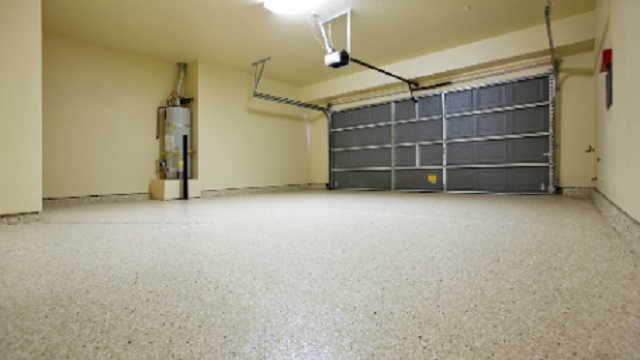Also Interesting
How to Improve Garage Door Insulation for Energy Efficiency

During all seasons, many people suffer from extreme temperatures in their garages – either too hot or too cold – and the place becomes uncomfortable as well as inefficient. Whether you are hit by the scorching summer heat or frozen by winter, stabilizing a favorable temperature in your garage can be a great challenge. Insulating the garage is one of the best ways to improve its energy efficiency.
This handbook will take you through simple steps of enhancing your garage door’s insulation in order to make it energy efficient. Moreover, additional tips will be given to ensure that the garage remains a useful and cozy part of your house all year round.
Types Of Garage Door Insulation
To start saving energy, choose the best garage door insulation. Various types of insulation keep warmth in without using too much electricity for different reasons. The following are some examples: Reflective foil insulation reflects heat away; foam board insulation has great thermal resistance; and batt insulation is easy to install and prevents heat loss effectively.
As explained by the experts at garage door repair Toronto, If you’re unsure about which one is right for you or how it should be done, consult with a professional service that will guide you through selecting and setting up suitable materials based on your requirements so as to make sure all year around comfort while being energy efficient at home.
Tips on How to Improve Garage Door Insulation
If you are looking forward to having a warmer winter this year as well as enjoying cooler summers, achieving the correct garage door insulation could totally transform your experience. Ensure that there is no inlet or outlet for air by blocking all possible spaces through which it could pass and beef up its interior with some rigid encasement too for good measure.
Fill in Gaps
This method aims at improving energy efficiency through filling up crevices on the gate which may be allowing leakage of air. When implemented, one can expect reduced electricity expenses due to minimal heating or cooling requirements and a more habitable environment.
● Check if there are any openings around where light from outside can be seen during daytime or if you feel a draft, that’s a clear indication of air seepage.
● The use of weather strips along edges acts as a barrier against unwanted maintaining normal flow within.
● Apply small beads of caulk to seal off tiny cracks found along frames.
● Fit new bottom seals where old ones are worn out since they are essential components in the fight against door drafts.
● For larger gaps, use expandable foam insulation which is effective at sealing them off and preventing airflow.
● Ensure that all fasteners and brackets are tight; sometimes gaps may appear simply due to things coming loose over time.
● Lastly, don’t forget about corners—they tend to be overlooked but can let out quite a bit if they’re not properly sealed.
Insulate the door
After plugging up any openings, another good step towards energy efficiency would be directly insulating your garage door. Selecting the proper material type is key during this phase so that you can achieve desired results without compromising structural integrity or aesthetics.
● The insulation should be secured to the door using fasteners or adhesive tape made for this purpose. It must remain flat and not push out the panels.
● Use weather-stripping or aluminum tape on the edges for a tight fit that will prevent any air leaks.
● Shut your garage door and look for any places you missed or spots that seem like they could let in drafts. You may need to add more sealing material.
If you add insulation directly to your garage door, it will make your house more comfortable and lower energy costs over time.
Insulation for Garage Walls and Ceiling
Insulating the walls and ceiling of your garage can have a huge impact on how much energy is used. It helps to keep the space warm during winter and cool in summer which saves money for heating and cooling.
● Find suitable insulation materials – fiberglass batts, foam board, or spray foam are good options depending on where you live and what you can afford.
● Accurately measure the area so that you do not buy too much or too little insulation.
● Cut insulation so it fits tightly between wall studs and ceiling joists because this stops hot/cold air from escaping through gaps.
● Attach each piece using the correct fasteners for your chosen type of insulating material. For example, adhesive works great with foam boards while staples work well with fiberglass batts.
● Put drywall or another type of wall paneling over insulation for a cleaner look and more fire resistance.
● Boost thermal performance by sealing all seams and edges with caulk or foam sealant to block drafts and moisture.
● If you live in an extremely hot climate, consider installing a radiant barrier.
Reflective foil placed over insulation can greatly reduce heat transfer from the sun-baked roof.
● Do not neglect the garage door itself – combining wall and ceiling insulation with an insulated garage door will maximize energy savings.
● Finally, check with local building codes for compliance, especially concerning ventilation to prevent moisture buildup.
Other Ways You Can Save Energy In Your Garage
If you want to take your garage’s energy efficiency up another notch, there are even more tricks you can try. Upgrade to an insulated door or add weather stripping for starters. You can also explore additional measures that will cut down on energy costs and keep your garage cozy no matter the season.
Install Insulated Garage Doors
Opting for insulated garage doors is a great way to save energy. Designed to keep heat in during the winter and out during the summer, these doors help maintain a consistent temperature inside the garage which can lead to lower electricity bills.
If you want to insulate your garage door, consider installing insulated doors. This can also reduce noise from outside, which is great for people who use their garage as a workshop or living space.
Enhancing the insulation properties of the door can be done by using weather stripping around it. What this does is seal off any gaps where air may seep in or out. Additionally, selecting an energy-efficient model of garage door opener contributes to overall system efficiency.
Use weather stripping
After installing insulated garage doors, another thing you might want to do is install weather stripping too. This will help keep any unwanted hot or cold air from slipping into your garage while keeping comfortable temperatures inside. It seals around where the bottom of the door meets the floor and its frame. Working undercover – inexpensive yet effective, weather stripping also fights against drafts; thus reducing one’s energy bill. Tools required for installation are minimal and therefore can be done by anyone with a little spare time.
Consider a garage door opener with energy saving features
If you’re going through the trouble of adding a weather seal, another energy-efficient trick would involve choosing openers with these features. This might include ones that have a “standby mode” setting which uses minimal power when not in use, or automatically switches off lights on the unit after some time of no activity.
This means lower energy bills and a happier planet. Some even have battery backups to keep things running during power outages, adding convenience without sacrificing eco-friendliness.
Opting for these advanced openers can make a noticeable difference in managing your home’s energy consumption. They work quietly and efficiently, reducing noise while also cutting down on unnecessary power use.
To conclude
Improving your garage door’s insulation is a smart move. It keeps your space comfy, slashes those energy bills, and even quiets down noise from outside. Start with some basic fixes like sealing gaps and adding proper insulation to the door itself.
Don’t forget the walls and ceiling. And if you’re feeling fancy, upgrading your entire door or picking a smarter opener can make a huge difference. Energy efficiency in the garage is totally achievable with these simple steps.
Also Interesting
Historic Return: NHL Confirms Player Participation in 2026 Winter Olympics

The NHL has officially confirmed the inclusion of its players in the 2026 Winter Olympics in Milan-Cortina, Italy, following a 12-year absence that left the fans craving the excitement of the real best-on-best international hockey. The announcement is a historical event, as it goes back to the Olympic arena where the hockey powerhouse nations of the world will eventually be faced with their complete NHL prowess.
The ruling has not only shaken the hockey fraternity but also the sports fraternity at large, as it has generated early predictions, betting debates, and revived rivalries. Also, such large websites as GGBet, where many fans place their bets, have also been on the lookout, offering odds and analysis on which country will win gold.
A Long-Awaited Comeback
Since the 2014 Olympics in Sochi, NHL players have not been given the chance to play in the Olympics. The spectators have since witnessed world championships that, even though competitive, did not have the superstar appeal of Olympic hockey. This decision of the league in selecting the players to Milan-Cortina is a recreation of the desires of the NHL and the international arena to become one again.
The 2026 tournament will be the one offering the excitement, talent, and passion that will be fitting among NHL players. These legends, such as Sidney Crosby, Connor McDavid, Auston Matthews, and Leon Draisaitl, could play with young players like Jack Hughes and Tim Stützle – that sort of experience and youth.
The Tournament Breakdown
The event in hockey will take place between 11 and 22 February 2026, and the team count will be 12, which will be divided into three groups:
● A: Canada, Switzerland, Czechia, France.
● B: Italy, Finland, Sweden, Slovakia.
● C: Latvia, Denmark, the US, Germany.
The teams will be playing three pre-elimination games followed by play-off, which will lead to the final match, and a gold medal will be given on February 22.
Slovakia is going to play against Finland, and Sweden against Italy. Team USA starts playing on February 12, and Team Canada plays against Czechia. The matches would all be at either the Santagiulia Ice Hockey Arena or the Rho Ice Hockey Arena, both in Milan.
Why This Moment Matters
It is not only entertainment but a legacy that the NHL has gone back to the Olympics. To the league, it reestablishes itself as the world body in professional hockey. To players, it makes their lifelong dream of playing in the national team a reality in the biggest sporting arena. And to fans, it revives the magic that made such moments as Crosby scoring his Golden Goal in Vancouver 2010 unforgettable.
Nevertheless, beyond the ice, such a move will make the NHL more global and strengthen the new generation of sportsmen. The Games of 2026 are expected to achieve a huge global following, whereby fans in North America, Europe, and other continents will be reached.
Looking Ahead
As the opening of February 2026 approaches, the teams are plotting, investigating, and preparing to contest a tournament that numerous people are calling the most competitive Olympic hockey tournament to date. The already existing dream is Canada vs. USA, Finland vs. Sweden, and national pride will clash against the NHL-type talent.
Final Thoughts
It is not a sports story, but a cultural phenomenon because NHL players are returning to the 2026 Winter Olympics. It is an embodiment of unity, excellence, and the unadulterated affection of hockey. The fans all around the world are eagerly awaiting the days when the puck will drop in Milan and they will be watching a show that has been 12 years in the making.
The tournament will not be remembered for the successive gold medals, but rather for the first face-off to the final gold medal celebration. It can be either your country that wins; it could be just watching the magic, but in any case, one thing is certain: the Olympics are back, and the game has never been this alive.
Also Interesting
From Innovation Hubs to Digital Habits, How Work and Leisure Are Changing in Alberta

Things have been changing in Alberta. The province isn’t just about oil and cattle anymore. Along with the wide-open skies, there’s a growing sense of invention. Just taking a walk through Calgary or Edmonton, you can see a difference from a few years ago. You’ll see people tapping away on laptops in coffee shops and talking about new ideas.
The workplace also looks completely different compared to a few years ago. Times have changed, with people being able to work from home, coffee shops, or any remote setting. Boring old offices have changed into relaxed lounges and coffee corners, which help to inspire creativity. Instead of traditional classrooms, learners can now do a lot of their lessons online.
But it’s not all about work. How people relax and unwind has also changed. Streaming their favourite show, gaming, and online entertainment have definitely become a part of everyday life. When the weather gets too cold or the schedule becomes too busy, entertainment is just a click away.
Online gaming has grown into a favorite digital pastime. Much like the best online casinos in the country, the fun comes from having variety. Some players chase the excitement of high-stakes games, while others prefer slower, social ones that let them chat with friends. There are games to suit every style and mood. There are also great incentives to look out for, like huge welcome bonuses, free spins, and VIP and loyalty points (source: https://www.pokerstrategy.com/online-casinos/canada/). These are especially great if you play regularly.
This trend of enjoying digital downtime also connects with Alberta’s working culture. The same traits that make Albertans great at building and problem-solving also show up in how they play. Whether they’re testing a new game feature, trying out a bonus offer, or experimenting with different apps, it’s all about curiosity. This habit of trying, learning, and adjusting is shaping a generation that’s both playful and ambitious. They treat technology as a tool for creativity and connection.
You can see this mix of work and leisure in everyday life. Someone might take a break from a remote work project to stream a show and then go right back to brainstorming ideas with colleagues. The old ways of separating work and play have changed. While people work just as hard, they’re finding new ways to relax and recharge. Young professionals are creating lifestyles that value flexibility as well as personal balance.
Alberta’s economy has always been resilient, but having this new digital layer has added something new. Ideas, skills, and online habits are becoming the province’s newest source of energy.
This wave of change matters because it’s not limited to one industry or age group. It’s happening in living rooms, classrooms, and working spaces. Alberta’s people are showing that progress can begin anywhere you open a laptop or pick up a phone. Innovation is not just about inventing something new. It’s about how everyday choices include blending the digital world into the real world. Alberta still holds onto its hardworking roots, but now it’s combined that with imagination and digital confidence. This is helping to shape a future that is full of possibilities.
-

 Alberta2 days ago
Alberta2 days agoAlberta Offers Enormous Advantages for AI Data Centres
-

 Alberta2 days ago
Alberta2 days agoNational Crisis Approaching Due To The Carney Government’s Centrally Planned Green Economy
-

 Alberta2 days ago
Alberta2 days agoCalgary mayor should retain ‘blanket rezoning’ for sake of Calgarian families
-

 Bruce Dowbiggin2 days ago
Bruce Dowbiggin2 days agoSports 50/50 Draws: Make Sure You Read The Small Print
-

 Carbon Tax18 hours ago
Carbon Tax18 hours agoCarney fails to undo Trudeau’s devastating energy policies
-

 Agriculture1 day ago
Agriculture1 day agoFederal cabinet calls for Canadian bank used primarily by white farmers to be more diverse
-

 COVID-192 days ago
COVID-192 days agoNew report warns Ottawa’s ‘nudge’ unit erodes democracy and public trust
-

 Censorship Industrial Complex2 days ago
Censorship Industrial Complex2 days agoQuebec City faces lawsuit after cancelling Christian event over “controversial” artist






